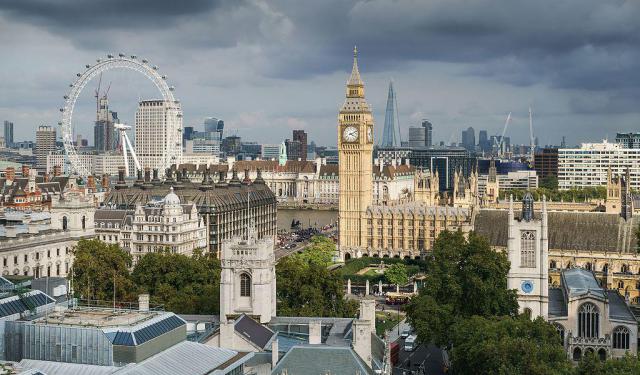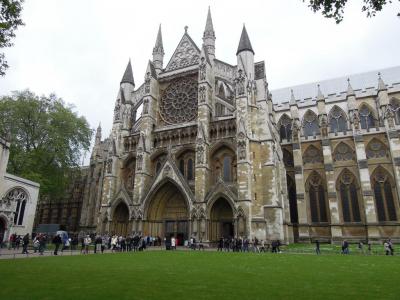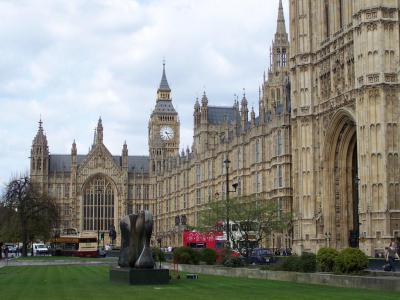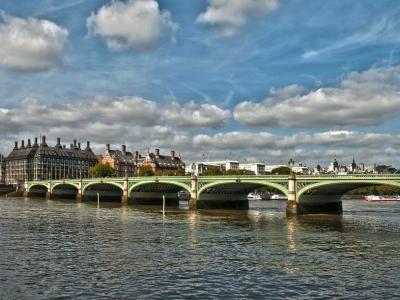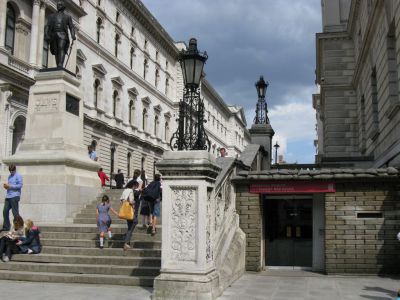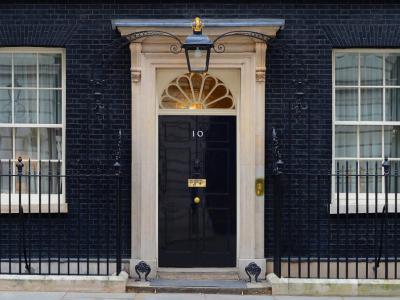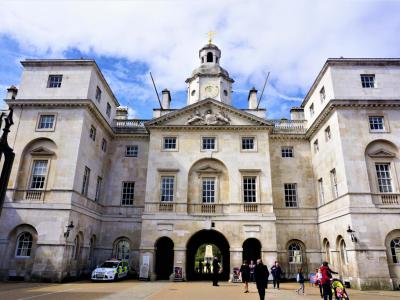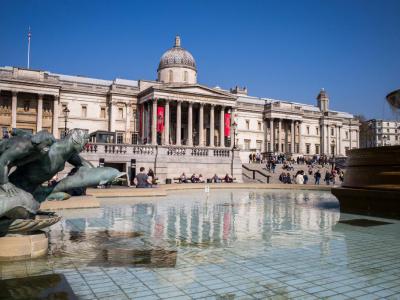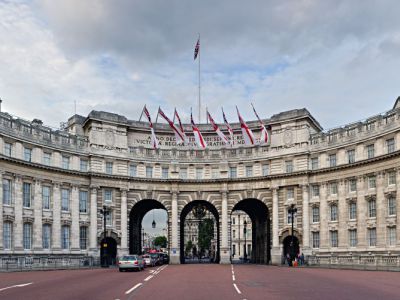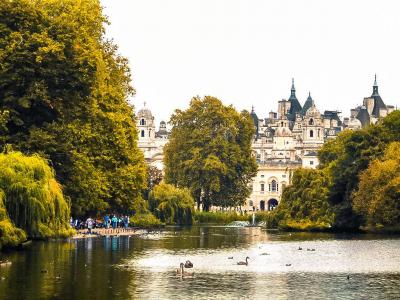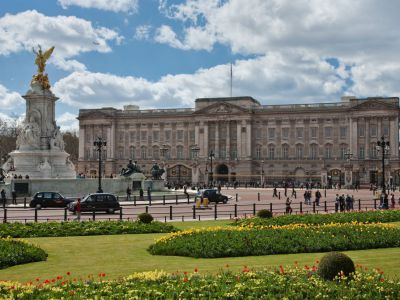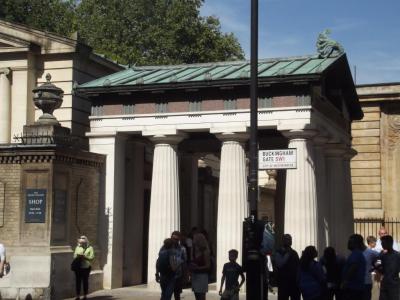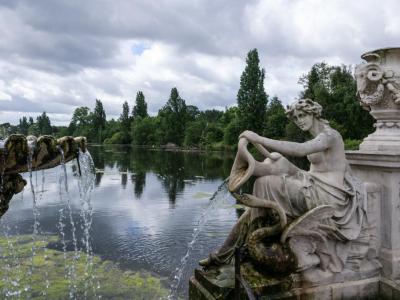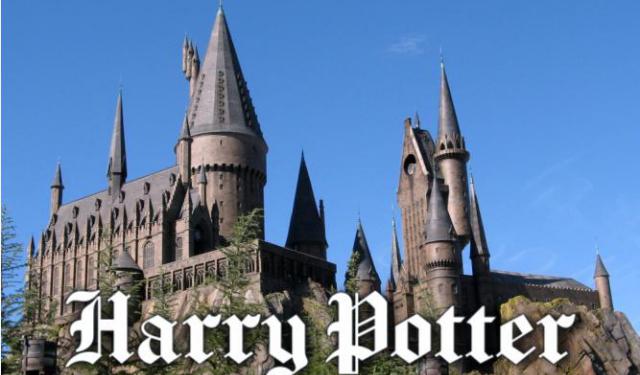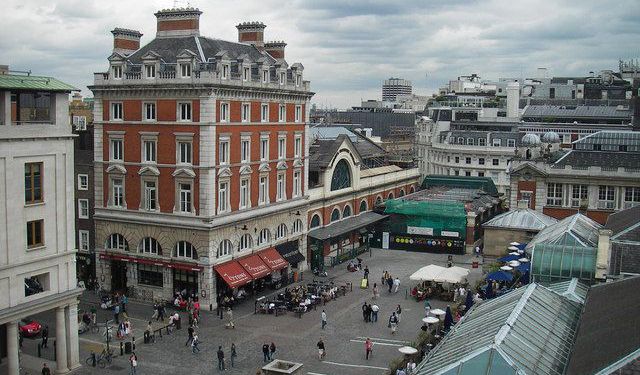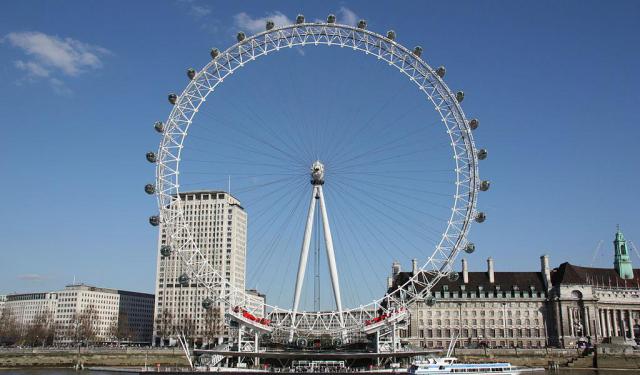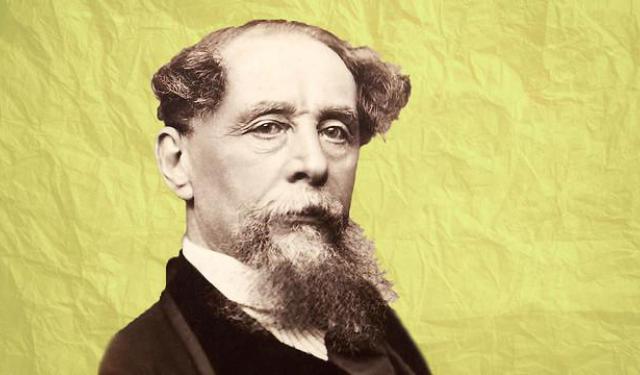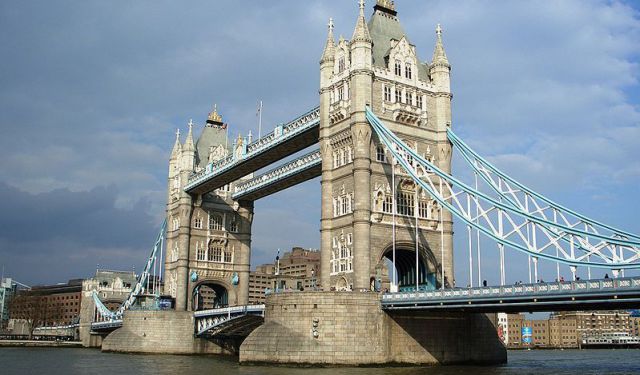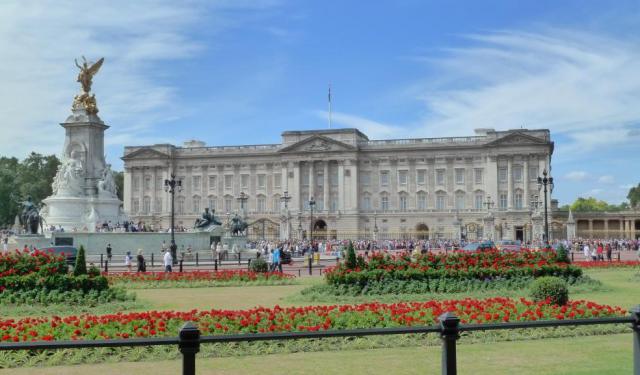Audio Guide: London Introduction Walking Tour (Self Guided), London
London: the capital of England, heart of the UK, and international heavyweight in history, culture, and sheer charm. Its name comes straight out of Rome. Londinium was founded circa 43 AD as a trading post. Then came Queen Boudica in 61 AD, who, let’s say, didn’t care much for Roman urban planning and burnt it to the ground. But Londinium wasn’t one to stay down-it bounced back, flourished, and kept growing until the Romans packed up in the 5th century.
The Anglo-Saxons, who arrived after that, rebranded the city Lundenwic. Soon, it found itself dodging Viking raids and soaking in that Danelaw drama. By the 11th century, King Edward the Confessor decided to class things up by building Westminster Abbey. In the year 1066, William the Conqueror stormed in, got crowned on Christmas Day, and kicked off a bit of royal real estate development-including the Tower of London. His son added Westminster Hall for good measure. Family values...
In 1666 came the Great Fire of London. Out of its ashes (well, not literally but figuratively speaking) rose Sir Christopher Wren with blueprints in hand, who rebuilt the city with masterpieces like St. Paul’s Cathedral. Since then, London has perfected the art of looking both old and new at the same time. From Shakespeare’s Globe to Tower Bridge to the futuristic Gherkin, it's architectural time travel in every direction.
Now, speaking of landmarks, Westminster Abbey is the royal crowning glory. Next door are the Houses of Parliament and Big Ben, ticking away the nation’s business. Cross Westminster Bridge for that postcard-perfect view, or a few steps away, descend into the Churchill War Rooms-a bunker where decisions that changed the world were taken during World War II. Sneak a peek at 10 Downing Street (behind lots of security), then trot over to the Household Cavalry Museum for soldiers, horses, and shiny helmets.
Northward lies Trafalgar Square, full of lions, fountains, and Lord Nelson observing the area. The National Gallery is right there too, featuring the likes of Van Gogh and da Vinci. Pass through Admiralty Arch, stroll The Mall like royalty, and arrive at Buckingham Palace. Don’t miss the Queen’s Gallery next door. And if you need a breather, St. James’s Park and Hyde Park are your leafy escapes.
London’s best explored on foot-every corner hides a story, every building holds a past. English writer Samuel Johnson wisely said, “When a man is tired of London, he is tired of life, for there is in London all that life can afford.” So lace up. The city’s waiting.
The Anglo-Saxons, who arrived after that, rebranded the city Lundenwic. Soon, it found itself dodging Viking raids and soaking in that Danelaw drama. By the 11th century, King Edward the Confessor decided to class things up by building Westminster Abbey. In the year 1066, William the Conqueror stormed in, got crowned on Christmas Day, and kicked off a bit of royal real estate development-including the Tower of London. His son added Westminster Hall for good measure. Family values...
In 1666 came the Great Fire of London. Out of its ashes (well, not literally but figuratively speaking) rose Sir Christopher Wren with blueprints in hand, who rebuilt the city with masterpieces like St. Paul’s Cathedral. Since then, London has perfected the art of looking both old and new at the same time. From Shakespeare’s Globe to Tower Bridge to the futuristic Gherkin, it's architectural time travel in every direction.
Now, speaking of landmarks, Westminster Abbey is the royal crowning glory. Next door are the Houses of Parliament and Big Ben, ticking away the nation’s business. Cross Westminster Bridge for that postcard-perfect view, or a few steps away, descend into the Churchill War Rooms-a bunker where decisions that changed the world were taken during World War II. Sneak a peek at 10 Downing Street (behind lots of security), then trot over to the Household Cavalry Museum for soldiers, horses, and shiny helmets.
Northward lies Trafalgar Square, full of lions, fountains, and Lord Nelson observing the area. The National Gallery is right there too, featuring the likes of Van Gogh and da Vinci. Pass through Admiralty Arch, stroll The Mall like royalty, and arrive at Buckingham Palace. Don’t miss the Queen’s Gallery next door. And if you need a breather, St. James’s Park and Hyde Park are your leafy escapes.
London’s best explored on foot-every corner hides a story, every building holds a past. English writer Samuel Johnson wisely said, “When a man is tired of London, he is tired of life, for there is in London all that life can afford.” So lace up. The city’s waiting.
How it works: Download the app "GPSmyCity: Walks in 1K+ Cities" from Apple App Store or Google Play Store to your mobile phone or tablet. The app turns your mobile device into a personal tour guide and its built-in GPS navigation functions guide you from one tour stop to next. The app works offline, so no data plan is needed when traveling abroad.
London Introduction Walking Tour Map
Guide Name: London Introduction Walking Tour
Guide Location: England » London (See other walking tours in London)
Guide Type: Self-guided Walking Tour (Sightseeing)
# of Attractions: 13
Tour Duration: 2 Hour(s)
Travel Distance: 4.2 Km or 2.6 Miles
Author: DanaOffice
Sight(s) Featured in This Guide:
Guide Location: England » London (See other walking tours in London)
Guide Type: Self-guided Walking Tour (Sightseeing)
# of Attractions: 13
Tour Duration: 2 Hour(s)
Travel Distance: 4.2 Km or 2.6 Miles
Author: DanaOffice
Sight(s) Featured in This Guide:
- Westminster Abbey
- Big Ben & Houses of Parliament
- Westminster Bridge
- Churchill War Rooms
- 10 Downing Street
- Household Cavalry Museum
- Trafalgar Square
- National Gallery
- Admiralty Arch
- St. James's Park
- Buckingham Palace
- Queen's Gallery
- Hyde Park
1) Westminster Abbey (must see)
Westminster Abbey-the Gothic heavyweight champion of British heritage, parked squarely in the City of Westminster. Back in the day, Westminster wasn’t even part of London proper. It was its own thing.
The roots of this holy site stretch all the way back to the late 10th century. But it wasn’t until King Edward the Confessor decided to go full Romanesque here, in the 11th century, that things got serious. He turned the abbey into one of Europe’s top-tier religious mega-structures. Edward didn’t live to see it fully materialize, though, but history appreciates his effort.
In 1245, Henry III kicked off construction of the Gothic version we see today. He also commissioned the fancy Cosmati pavement near the High Altar-because kings of all people do appreciate custom flooring. Most of what we admire here now was wrapped up under Richard II, and in 1519, Henry VII added a gorgeous chapel to the Virgin Mary for good measure. As for the iconic west towers, Early Gothic Revival, they were built between 1722 and 1745.
But Westminster Abbey is not just a church. No. It’s the spiritual VIP lounge of the UK. Monarchs have been crowned here since 1066, starting with William the Conqueror. It’s also the final resting place for legends: Queen Elizabeth I, Isaac Newton, Charles Darwin, Geoffrey Chaucer, Rudyard Kipling, Laurence Olivier… Basically, if you’ve made Britain proud, there’s a plot here waiting for you.
And don’t forget the emotional landmarks: Princess Diana’s funeral in 1997, and the royal wedding of Prince William and Kate Middleton in 2011. Yes, this place has seen more royal drama than a season of The Crown.
If you consider visiting, remember: Lines form year-round, so book online to skip the queue like a pro. But don’t plan your Instagram reel just yet-no photography inside is allowed. It’s all eyes and memory...
As a bonus round, make a literary pilgrimage to Poet’s Corner and pay respects to Mr. Charles Dickens himself. Per his modest request, his gravestone simply reads:
CHARLES DICKENS
BORN 7th FEBRUARY 1812
DIED 9th JUNE 1870
Dickens died in Kent, but the public insisted-and The Times newspaper rallied behind the cause-that only Westminster would do as his final resting place. The funeral was private. The legacy-immortal.
So, whether it’s the soaring arches, the centuries of coronations, or the sheer weight of brilliance buried beneath your feet, Westminster Abbey is London in its architectural form-solemn, storied, and just a touch dramatic.
The roots of this holy site stretch all the way back to the late 10th century. But it wasn’t until King Edward the Confessor decided to go full Romanesque here, in the 11th century, that things got serious. He turned the abbey into one of Europe’s top-tier religious mega-structures. Edward didn’t live to see it fully materialize, though, but history appreciates his effort.
In 1245, Henry III kicked off construction of the Gothic version we see today. He also commissioned the fancy Cosmati pavement near the High Altar-because kings of all people do appreciate custom flooring. Most of what we admire here now was wrapped up under Richard II, and in 1519, Henry VII added a gorgeous chapel to the Virgin Mary for good measure. As for the iconic west towers, Early Gothic Revival, they were built between 1722 and 1745.
But Westminster Abbey is not just a church. No. It’s the spiritual VIP lounge of the UK. Monarchs have been crowned here since 1066, starting with William the Conqueror. It’s also the final resting place for legends: Queen Elizabeth I, Isaac Newton, Charles Darwin, Geoffrey Chaucer, Rudyard Kipling, Laurence Olivier… Basically, if you’ve made Britain proud, there’s a plot here waiting for you.
And don’t forget the emotional landmarks: Princess Diana’s funeral in 1997, and the royal wedding of Prince William and Kate Middleton in 2011. Yes, this place has seen more royal drama than a season of The Crown.
If you consider visiting, remember: Lines form year-round, so book online to skip the queue like a pro. But don’t plan your Instagram reel just yet-no photography inside is allowed. It’s all eyes and memory...
As a bonus round, make a literary pilgrimage to Poet’s Corner and pay respects to Mr. Charles Dickens himself. Per his modest request, his gravestone simply reads:
CHARLES DICKENS
BORN 7th FEBRUARY 1812
DIED 9th JUNE 1870
Dickens died in Kent, but the public insisted-and The Times newspaper rallied behind the cause-that only Westminster would do as his final resting place. The funeral was private. The legacy-immortal.
So, whether it’s the soaring arches, the centuries of coronations, or the sheer weight of brilliance buried beneath your feet, Westminster Abbey is London in its architectural form-solemn, storied, and just a touch dramatic.
2) Big Ben & Houses of Parliament (must see)
Ah yes, Big Ben-London’s most famous timekeeper! Often mistaken for the entire tower, technically, it's just the bell inside. The tower itself, once modestly named the Clock Tower, got a royal upgrade in 2012 and is now known as the Elizabeth Tower, in honor of Queen Elizabeth II’s Diamond Jubilee.
As for Big Ben-the bell-it weighs a jaw-dropping 15 tonnes. That’s about the weight of three adult elephants. It chimes every hour with a deep, resonant bong that echoes across the city, while four smaller bells handle the quarter-hour duties like loyal timekeeping sidekicks.
As for the name “Big Ben”, theories abound. Some say it was named after Benjamin Hall, the rather large man in charge of installing the bell. Others swear it honors Benjamin Caunt, a Victorian heavyweight boxer. Either way, it’s clear: you didn’t get to be “Big Ben” by being discreet.
Just next door, you'll find the Palace of Westminster, home of the Houses of Parliament-that’s the House of Commons and the House of Lords for those keeping score. After a fire in 1834 burned the old palace to a crisp, King William IV generously offered up Buckingham Palace as a backup. The MPs politely declined, presumably because having tea in the Throne Room seemed a bit too much.
These days, the House of Commons is often in the headlines, especially during the theatrical Wednesdays known as Prime Minister’s Questions. Yes, it’s as lively as it sounds. The public can watch the action live, either by scoring a free ticket through their MP or simply queuing up outside (bonus points if it’s raining-very British).
In terms of security, expect the full “airport-lite” treatment. Bags scanned, belts off, shoes inspected-but thankfully, no need to explain your carry-on liquids.
Now, if the idea of parliamentary debates doesn’t tickle your fancy and you’re more into aesthetic admiration, simply head over to Westminster Bridge-some 500 yards away. From there, you’ll get the postcard shot of Big Ben and the Parliament buildings, no queuing or shoe removal required. Just you, the view, and a thousand other camera-happy tourists. Smile for history!
As for Big Ben-the bell-it weighs a jaw-dropping 15 tonnes. That’s about the weight of three adult elephants. It chimes every hour with a deep, resonant bong that echoes across the city, while four smaller bells handle the quarter-hour duties like loyal timekeeping sidekicks.
As for the name “Big Ben”, theories abound. Some say it was named after Benjamin Hall, the rather large man in charge of installing the bell. Others swear it honors Benjamin Caunt, a Victorian heavyweight boxer. Either way, it’s clear: you didn’t get to be “Big Ben” by being discreet.
Just next door, you'll find the Palace of Westminster, home of the Houses of Parliament-that’s the House of Commons and the House of Lords for those keeping score. After a fire in 1834 burned the old palace to a crisp, King William IV generously offered up Buckingham Palace as a backup. The MPs politely declined, presumably because having tea in the Throne Room seemed a bit too much.
These days, the House of Commons is often in the headlines, especially during the theatrical Wednesdays known as Prime Minister’s Questions. Yes, it’s as lively as it sounds. The public can watch the action live, either by scoring a free ticket through their MP or simply queuing up outside (bonus points if it’s raining-very British).
In terms of security, expect the full “airport-lite” treatment. Bags scanned, belts off, shoes inspected-but thankfully, no need to explain your carry-on liquids.
Now, if the idea of parliamentary debates doesn’t tickle your fancy and you’re more into aesthetic admiration, simply head over to Westminster Bridge-some 500 yards away. From there, you’ll get the postcard shot of Big Ben and the Parliament buildings, no queuing or shoe removal required. Just you, the view, and a thousand other camera-happy tourists. Smile for history!
3) Westminster Bridge
Westminster Bridge is the bridge that nobody initially wanted. Back in the day, the Church, the City, and especially the watermen (who were not too keen on losing their river taxi business) all threw shade at the idea. But once it was finally built-with 15 graceful semi-circular arches-it was hailed as the first proper stone bridge across the Thames in over 500 years. Suddenly, everybody loved it-especially artists like Samuel Scott, Canaletto, and Claude Monet, who all went watercolor-wild, capturing its curves.
But then came the drama. In 1831, the old, crumbling London Bridge was torn down, which-surprise!-changed the river’s flow and started eroding Westminster Bridge’s foundations like a soggy biscuit. Something had to be done, so Parliament passed an Act in 1853, handing over the bridge to the Commissioners of Public Works. It was at that point that Thomas Page, the engineer, came along with Sir Charles Barry, fresh off designing the new Houses of Parliament (after the great fire of 1834), who was brought in to make sure that the new bridge would match Parliament’s fancy new Gothic threads.
The result was a beauty unveiled on Queen Victoria’s 43rd birthday, May 24, 1862-complete with a 25-gun salute for her 25 years of ruling the realm. The bridge stretches 827 feet across the Thames and flaunts seven elliptical cast-iron arches, gray granite abutments, and more neo-Gothic flair than a Victorian novel. As for the green paint, that’s a cheeky nod to the House of Commons (which, conveniently, is the closest part of Parliament to the bridge). And if you look closely, the ornate ironwork is dripping with UK symbolism: portcullises, roses, thistles, shields, and St. George’s cross.
The view from the middle of the bridge is a postcard waiting to happen. You’ve got the Palace of Westminster on the one side, the London Eye on the other, and the Thames doing its timeless shimmer underneath. North, south, east-there’s not a bad angle in sight. So go on-strike a pose, soak in the skyline, and cross like a monarch.
But then came the drama. In 1831, the old, crumbling London Bridge was torn down, which-surprise!-changed the river’s flow and started eroding Westminster Bridge’s foundations like a soggy biscuit. Something had to be done, so Parliament passed an Act in 1853, handing over the bridge to the Commissioners of Public Works. It was at that point that Thomas Page, the engineer, came along with Sir Charles Barry, fresh off designing the new Houses of Parliament (after the great fire of 1834), who was brought in to make sure that the new bridge would match Parliament’s fancy new Gothic threads.
The result was a beauty unveiled on Queen Victoria’s 43rd birthday, May 24, 1862-complete with a 25-gun salute for her 25 years of ruling the realm. The bridge stretches 827 feet across the Thames and flaunts seven elliptical cast-iron arches, gray granite abutments, and more neo-Gothic flair than a Victorian novel. As for the green paint, that’s a cheeky nod to the House of Commons (which, conveniently, is the closest part of Parliament to the bridge). And if you look closely, the ornate ironwork is dripping with UK symbolism: portcullises, roses, thistles, shields, and St. George’s cross.
The view from the middle of the bridge is a postcard waiting to happen. You’ve got the Palace of Westminster on the one side, the London Eye on the other, and the Thames doing its timeless shimmer underneath. North, south, east-there’s not a bad angle in sight. So go on-strike a pose, soak in the skyline, and cross like a monarch.
4) Churchill War Rooms (must see)
Tucked beneath the former Office of Public Information-now the Treasury-lies one of London’s best-kept “open secrets”: the Churchill War Rooms. This covert bunker was the nerve center from which Winston Churchill directed Britain’s wartime efforts... and occasionally napped in his bathrobe.
Hidden right under Clive Steps on King Charles Street, the entrance is so discreet you might walk right past without noticing it. In fact, the Nazis never guessed that Britain’s emergency government was cheekily hiding in plain sight, just 12 feet below London’s crust. For comparison, Hitler himself was holed up a paranoid 180 feet underground. Overcompensating, perhaps?
Built in 1938 and retrofitted as the war heated up, the War Rooms were reinforced with a “bomb-resistant” ceiling. Emphasis on resistant, not bomb-proof, which made every thunderclap a bit more thrilling for those working below. Spanning 30,000 square feet, the facility came equipped with everything from conference rooms to bedrooms, because a good nap is crucial for strategic warfare...
When the war ended, everyone simply left. No cleanup, no moving out, just poof-gone. Clocks are still frozen at 4:58 pm, marking the first wartime Cabinet meeting in 1940, and the calendar in the Map Room eternally reads August 16, 1945-the day Japan surrendered. It's like time hit “pause” and never came back.
You’ll see phones with odd green handles-high-tech marvels of the 1940s known as scrambler phones. They took 20 minutes to warm up and blasted white noise like an angry seashell. Eavesdropping? Not on Churchill’s watch.
Meanwhile, the walls are studded with pinholes from frantic map-stabbing, some patched so many times they now qualify as historical patchwork quilts.
Churchill himself only spent a handful of nights here, but he used the bunker frequently-for meetings, cigars, and power naps in less-than-Prime-Ministerial attire. One of the highlights is a fire bucket turned ashtray, where he’d casually discard cigar stubs. Enterprising Marine guards allegedly sold those stubs to souvenir hunters. Recycling and capitalism at their finest.
Rumor has it there’s a second, even deeper bunker underneath, full of pipes, cables, and possibly Churchill’s wine cellar. Sadly, not open to the public-yet...
Tip:
Book online to skip the queue.
The audio tour takes a little over an hour.
Bring snacks-dining nearby is limited unless you fancy lunching on history alone.
Hidden right under Clive Steps on King Charles Street, the entrance is so discreet you might walk right past without noticing it. In fact, the Nazis never guessed that Britain’s emergency government was cheekily hiding in plain sight, just 12 feet below London’s crust. For comparison, Hitler himself was holed up a paranoid 180 feet underground. Overcompensating, perhaps?
Built in 1938 and retrofitted as the war heated up, the War Rooms were reinforced with a “bomb-resistant” ceiling. Emphasis on resistant, not bomb-proof, which made every thunderclap a bit more thrilling for those working below. Spanning 30,000 square feet, the facility came equipped with everything from conference rooms to bedrooms, because a good nap is crucial for strategic warfare...
When the war ended, everyone simply left. No cleanup, no moving out, just poof-gone. Clocks are still frozen at 4:58 pm, marking the first wartime Cabinet meeting in 1940, and the calendar in the Map Room eternally reads August 16, 1945-the day Japan surrendered. It's like time hit “pause” and never came back.
You’ll see phones with odd green handles-high-tech marvels of the 1940s known as scrambler phones. They took 20 minutes to warm up and blasted white noise like an angry seashell. Eavesdropping? Not on Churchill’s watch.
Meanwhile, the walls are studded with pinholes from frantic map-stabbing, some patched so many times they now qualify as historical patchwork quilts.
Churchill himself only spent a handful of nights here, but he used the bunker frequently-for meetings, cigars, and power naps in less-than-Prime-Ministerial attire. One of the highlights is a fire bucket turned ashtray, where he’d casually discard cigar stubs. Enterprising Marine guards allegedly sold those stubs to souvenir hunters. Recycling and capitalism at their finest.
Rumor has it there’s a second, even deeper bunker underneath, full of pipes, cables, and possibly Churchill’s wine cellar. Sadly, not open to the public-yet...
Tip:
Book online to skip the queue.
The audio tour takes a little over an hour.
Bring snacks-dining nearby is limited unless you fancy lunching on history alone.
5) 10 Downing Street
10 Downing Street-or as the British press affectionately calls it, Number 10-is the official residence and workplace of the UK’s Prime Minister. It has been the address for power players since the 18th century. Don’t be fooled by its modest black door-it’s basically the palace of spreadsheets and late-night policy debates-equal parts nerve center and nerve-wracking...
Originally cobbled together from three separate houses (because one apparently wasn't enough for 18th-century real estate ambitions), Number 10 now contains over 100 rooms. The PM’s family lives on the third floor, their kitchen’s tucked away in the basement, and the rest of the place is a maze of offices, reception rooms, and the odd spot for international awkward silences. There’s even a private garden-half an acre, no less-perfect for pondering global crises over a cup of Earl Grey.
Now, speaking of doors, that iconic black front door is not wood but reinforced steel. No keyhole, either-because obviously, in this house, you don’t knock, you get buzzed in. A doorman’s always on duty because the door only opens from the inside. (Some say this is where British stoicism is forged.)
And the phrase “in the hot seat”? Thank Number 10 for that. The hallway used to feature a rather dramatic black chair, complete with a coal-filled drawer underneath to warm the night watchman's backside. Forget ergonomics-that was 18th-century comfort.
The house has taken its share of hits. During WWII, a German bomb rudely messed with the kitchen. Then in 1991, the IRA launched a mortar attack-Downing Street survived, but a splinter still sticks defiantly in the upstairs plaster, like a war story the walls refuse to let go.
Inside, the Grand Staircase displays portraits of every British Prime Minister in order, a visual reminder that political haircuts have come a long way. Tony Blair added bees to the décor (yes, actual plaster bees in the window frames), while Margaret Thatcher insisted on a mini roof over one door-presumably for extra austerity.
Public tours-unfortunately, not happening. Entry is tighter than the King’s biscuit tin. But if you’re into wizardry, you’ll appreciate the Harry Potter trivia-Number 10 doubles as a magical portal, as revealed in The Half-Blood Prince. And yes, Kingsley wizard Shacklebolt worked here undercover, guarding the Prime Minister against the dark forces of Lord Voldemort. There's obviously more to this place than you'd expect...
Tip:
Pair your Downing Street sightseeing with a wider walk through Whitehall and Westminster. Politics, pomp, and a splash of Potter-it’s all just a few steps away.
Originally cobbled together from three separate houses (because one apparently wasn't enough for 18th-century real estate ambitions), Number 10 now contains over 100 rooms. The PM’s family lives on the third floor, their kitchen’s tucked away in the basement, and the rest of the place is a maze of offices, reception rooms, and the odd spot for international awkward silences. There’s even a private garden-half an acre, no less-perfect for pondering global crises over a cup of Earl Grey.
Now, speaking of doors, that iconic black front door is not wood but reinforced steel. No keyhole, either-because obviously, in this house, you don’t knock, you get buzzed in. A doorman’s always on duty because the door only opens from the inside. (Some say this is where British stoicism is forged.)
And the phrase “in the hot seat”? Thank Number 10 for that. The hallway used to feature a rather dramatic black chair, complete with a coal-filled drawer underneath to warm the night watchman's backside. Forget ergonomics-that was 18th-century comfort.
The house has taken its share of hits. During WWII, a German bomb rudely messed with the kitchen. Then in 1991, the IRA launched a mortar attack-Downing Street survived, but a splinter still sticks defiantly in the upstairs plaster, like a war story the walls refuse to let go.
Inside, the Grand Staircase displays portraits of every British Prime Minister in order, a visual reminder that political haircuts have come a long way. Tony Blair added bees to the décor (yes, actual plaster bees in the window frames), while Margaret Thatcher insisted on a mini roof over one door-presumably for extra austerity.
Public tours-unfortunately, not happening. Entry is tighter than the King’s biscuit tin. But if you’re into wizardry, you’ll appreciate the Harry Potter trivia-Number 10 doubles as a magical portal, as revealed in The Half-Blood Prince. And yes, Kingsley wizard Shacklebolt worked here undercover, guarding the Prime Minister against the dark forces of Lord Voldemort. There's obviously more to this place than you'd expect...
Tip:
Pair your Downing Street sightseeing with a wider walk through Whitehall and Westminster. Politics, pomp, and a splash of Potter-it’s all just a few steps away.
6) Household Cavalry Museum
If you linger around Horse Guards long enough, chances are you'll spot a member of the Household Cavalry either frozen in place like a regal statue or clip-clopping past you with practiced pomp. These aren’t just any soldiers, mind you, but the crimson-clad, brass-armored elite, looking like they galloped straight out of a painting and into your vacation photos. Drawn from two of the most prestigious regiments in the British Army-the Life Guards and the Blues and Royals-these troops don’t simply protect the monarch, they are the monarch’s muscle, front and center for state occasions and that crowd-pleasing ritual known as the Changing of the Guard.
Just behind all that ceremonial splendor is the Household Cavalry Museum, tucked inside what used to be the cavalry’s 17th-century stables. Inside, you’ll find an exhibit game strong enough to rival the soldiers themselves-gleaming weapons, historic uniforms dating back to 1661, and modern interactive displays that show the cavalry’s current duties (note: it’s not all parades and photo ops).
In the tack room, you can try your hand at trooper life-literally. Feel the weight of a saddle, size up some bridles, and even suit up in full regalia, complete with the iconic brass helmet and horsehair plume that makes everyone look ten percent more heroic. And if that’s not enough equestrian magic, just head to the glass wall overlooking the stable block, where you can spy on the horses as they’re groomed, fed, and no doubt wondering why the humans aren’t wearing helmets more often.
In short, it’s where history meets horsepower-and both wear very shiny boots.
Just behind all that ceremonial splendor is the Household Cavalry Museum, tucked inside what used to be the cavalry’s 17th-century stables. Inside, you’ll find an exhibit game strong enough to rival the soldiers themselves-gleaming weapons, historic uniforms dating back to 1661, and modern interactive displays that show the cavalry’s current duties (note: it’s not all parades and photo ops).
In the tack room, you can try your hand at trooper life-literally. Feel the weight of a saddle, size up some bridles, and even suit up in full regalia, complete with the iconic brass helmet and horsehair plume that makes everyone look ten percent more heroic. And if that’s not enough equestrian magic, just head to the glass wall overlooking the stable block, where you can spy on the horses as they’re groomed, fed, and no doubt wondering why the humans aren’t wearing helmets more often.
In short, it’s where history meets horsepower-and both wear very shiny boots.
7) Trafalgar Square (must see)
Britain’s most self-important plaza, Trafalgar Square is arguably the closest thing to London’s beating heart (if London had ventricles paved in pigeons and protest signs). Want the official center of the city? That’s actually a tiny traffic island called Charing Cross, just south of the square. Yep, all distances to London are measured from there. Not Buckingham Palace. Not Big Ben. A glorified roundabout...
Now, if you're into obscure imperial measurements, Trafalgar’s got you covered. Nestled behind the café, you’ll find the Imperial Standard measures: inches, feet, yards, chains, perches, poles... basically, the greatest hits of Victorian measuring tape. Originally installed in 1876, they were moved in 2003 when the north terrace was pedestrianized-because who needs traffic when you’ve got trivia?
The square gets its name from the Battle of Trafalgar, a Napoleonic showdown where Admiral Lord Nelson heroically defeated the French and Spanish fleets in 1805... and promptly died doing so. 30 years later, the square got its now-famous name. Then, in 1843, they added Nelson’s Column, a towering tribute built from Devon granite, with bronze panels depicting his greatest hits: Saint Vincent, The Nile, Copenhagen, and Trafalgar-which, to be fair, did earn him the naming rights.
By 1868, the stone lions guarding the column were considered too puny for British pride, so the sculptor Edwin Landseer crafted bronze ones instead, with remarkable anatomical precision. Beautiful, grand, majestic-except, apparently, he got one detail hilariously wrong: he sculpted the back of the lions as if they had beanbag backs (real lions don’t sag like that).
Surrounded by fountains, tourists, and-until recently-a whole lot of feathered freeloaders, Trafalgar was once London’s top pigeon hangout. That is, until a mayor declared them public enemy number one and evicted the birdseed dealers. The pigeons, scandalized, have never quite forgiven the city.
Tip:
Plant yourself on the steps, let the sounds of the city wash over you, and watch the sun dip behind Nelson’s heroic silhouette. Or just use it as your springboard to the rest of London-you’re already at the center, after all.
Now, if you're into obscure imperial measurements, Trafalgar’s got you covered. Nestled behind the café, you’ll find the Imperial Standard measures: inches, feet, yards, chains, perches, poles... basically, the greatest hits of Victorian measuring tape. Originally installed in 1876, they were moved in 2003 when the north terrace was pedestrianized-because who needs traffic when you’ve got trivia?
The square gets its name from the Battle of Trafalgar, a Napoleonic showdown where Admiral Lord Nelson heroically defeated the French and Spanish fleets in 1805... and promptly died doing so. 30 years later, the square got its now-famous name. Then, in 1843, they added Nelson’s Column, a towering tribute built from Devon granite, with bronze panels depicting his greatest hits: Saint Vincent, The Nile, Copenhagen, and Trafalgar-which, to be fair, did earn him the naming rights.
By 1868, the stone lions guarding the column were considered too puny for British pride, so the sculptor Edwin Landseer crafted bronze ones instead, with remarkable anatomical precision. Beautiful, grand, majestic-except, apparently, he got one detail hilariously wrong: he sculpted the back of the lions as if they had beanbag backs (real lions don’t sag like that).
Surrounded by fountains, tourists, and-until recently-a whole lot of feathered freeloaders, Trafalgar was once London’s top pigeon hangout. That is, until a mayor declared them public enemy number one and evicted the birdseed dealers. The pigeons, scandalized, have never quite forgiven the city.
Tip:
Plant yourself on the steps, let the sounds of the city wash over you, and watch the sun dip behind Nelson’s heroic silhouette. Or just use it as your springboard to the rest of London-you’re already at the center, after all.
8) National Gallery (must see)
If you’ve ever even squinted at a painting and thought, “Huh, that’s nice,” then the National Gallery deserves a prime spot on your London to-do list. It’s not just any gallery-it’s a global heavyweight, housing over 2,300 works from the who’s who of art history: Michelangelo, Leonardo, Turner, Monet, van Gogh, Picasso... you get the idea. Step through its stately portico overlooking Trafalgar Square, and you’ll tumble straight into centuries of artistic genius.
Now, if you hang a sharp left at the entrance, you’ll find the Sainsbury Wing. It’s modern, it’s moody, and it’s medieval-perfect for lovers of halos, tempera, and crowds that don’t jostle quite as much.
Don’t be surprised if a “quick pop-in” turns into an all-day affair. Must-sees include Holbein’s The Ambassadors, complete with a gloriously skewed skull (visible only if you stand just right and maybe squint like you mean it). Make sure not to miss van Eyck’s Arnolfini Portrait, where a couple holds hands while a mysterious mirror photobombs from the background, or da Vinci’s Virgin of the Rocks, dripping with drama and Renaissance elegance. And of course, in Turner’s Rain, Steam, and Speed, check out the train, which is not the only thing speeding-you’ll need sharp eyes to spot a hare bolting for dear life.
The Gallery also hosts special exhibitions that are buzzy enough to make even the Mona Lisa smirk. These usually require a ticket and advance booking, but the permanent collection is gloriously free, always. You can join a guided tour, listen to a curator wax lyrical, or just wander with your own thoughts and an audio guide.
Tip:
If at some point, your stomach starts growling louder than the gallery’s whisper policy allows, head to the in-house restaurant. They serve Colchester native oysters and artful sandwiches, not to mention themed afternoon teas with more traditional choices like cakes that change with the exhibits. As for the scones, they are a permanent fixture. Afternoon tea is served daily, no reservation needed-just bring your appetite and maybe a friend who knows the difference between Impressionism and Expressionism.
Long story short: go for the art, stay for the scones.
Now, if you hang a sharp left at the entrance, you’ll find the Sainsbury Wing. It’s modern, it’s moody, and it’s medieval-perfect for lovers of halos, tempera, and crowds that don’t jostle quite as much.
Don’t be surprised if a “quick pop-in” turns into an all-day affair. Must-sees include Holbein’s The Ambassadors, complete with a gloriously skewed skull (visible only if you stand just right and maybe squint like you mean it). Make sure not to miss van Eyck’s Arnolfini Portrait, where a couple holds hands while a mysterious mirror photobombs from the background, or da Vinci’s Virgin of the Rocks, dripping with drama and Renaissance elegance. And of course, in Turner’s Rain, Steam, and Speed, check out the train, which is not the only thing speeding-you’ll need sharp eyes to spot a hare bolting for dear life.
The Gallery also hosts special exhibitions that are buzzy enough to make even the Mona Lisa smirk. These usually require a ticket and advance booking, but the permanent collection is gloriously free, always. You can join a guided tour, listen to a curator wax lyrical, or just wander with your own thoughts and an audio guide.
Tip:
If at some point, your stomach starts growling louder than the gallery’s whisper policy allows, head to the in-house restaurant. They serve Colchester native oysters and artful sandwiches, not to mention themed afternoon teas with more traditional choices like cakes that change with the exhibits. As for the scones, they are a permanent fixture. Afternoon tea is served daily, no reservation needed-just bring your appetite and maybe a friend who knows the difference between Impressionism and Expressionism.
Long story short: go for the art, stay for the scones.
9) Admiralty Arch
The Mall-London’s answer to a Parisian boulevard (if Paris had fewer croissants and more royal pageantry). This grand, tree-lined stretch was laid out in the early 1900s as a grand tribute to Queen Victoria. Gliding elegantly along the top edge of St. James’s Park, it is perfect for parades, pomp, and the occasional royal wave.
At one end of the Mall, rising like a stone eyebrow over the road, stands Admiralty Arch. It’s not just one arch-oh no-it’s five: two for pedestrians, two for cars, and one exclusive center arch, which is rolled out only for state occasions or when the King’s feeling particularly dramatic. Until 2012, the Arch moonlighted as a government building and even hosted the Prime Minister whenever No. 10 needed a makeover. Presently, it’s undergoing conversion into a luxury hotel, complete with a jaw-dropping £150-million penthouse-basically Buckingham Palace without the job.
And now, a small detour into the bizarre: look closely at the inside wall of the right-hand car arch (as you face The Mall), and you might spot... a bronze nose. Yes, the nose. Not a lost statue part or prank gone wrong, but a fully intentional nose installed by a rogue artist in 1997. No one really knows why it’s there, though some whisper it’s a tribute to the Duke of Wellington’s famously generous proboscis. What we do know is that the Royal Horse Guards still give it a lucky rub as they pass by-maybe as a sign of their admiration for the Iron Duke or maybe simply because even in a city of secrets, superstition always gets the last laugh...
At one end of the Mall, rising like a stone eyebrow over the road, stands Admiralty Arch. It’s not just one arch-oh no-it’s five: two for pedestrians, two for cars, and one exclusive center arch, which is rolled out only for state occasions or when the King’s feeling particularly dramatic. Until 2012, the Arch moonlighted as a government building and even hosted the Prime Minister whenever No. 10 needed a makeover. Presently, it’s undergoing conversion into a luxury hotel, complete with a jaw-dropping £150-million penthouse-basically Buckingham Palace without the job.
And now, a small detour into the bizarre: look closely at the inside wall of the right-hand car arch (as you face The Mall), and you might spot... a bronze nose. Yes, the nose. Not a lost statue part or prank gone wrong, but a fully intentional nose installed by a rogue artist in 1997. No one really knows why it’s there, though some whisper it’s a tribute to the Duke of Wellington’s famously generous proboscis. What we do know is that the Royal Horse Guards still give it a lucky rub as they pass by-maybe as a sign of their admiration for the Iron Duke or maybe simply because even in a city of secrets, superstition always gets the last laugh...
10) St. James's Park (must see)
Once upon a royal time, a queen casually asked her courtier how much it would cost to kick the public out of St. James’s Park. The courtier, with nerves of steel and a flair for drama, replied, “Only your crown, ma’am.” And that pretty much sums up the importance of this place-mess with the people’s park, and you’re one coronation short of a monarchy.
Wedged gracefully between three heavy-hitters-Buckingham Palace, St. James’s Palace, and the political power zone of Westminster-St. James’s Park is London’s oldest and arguably most charming green retreat. Back in 1532, Henry VIII thought this marsh was in great need of deer, so he snapped it up for his very own deer nursery. Later, during the reign of James I, the land was drained, and an aviary was installed (giving rise to the name Birdcage Walk), along with a zoo that featured exotic species like crocodiles, camels, and even an elephant.
Then came Charles II, freshly returned from exile in France with some serious garden envy after ogling Versailles. He rolled up his sleeves and transformed the park into a regal playground with neat avenues, fruit trees, a canal, and a whole zoo of goats, sheep, and deer casually grazing the lawns. By the 1700s, the park had taken a turn for the scandalous, becoming a preferred hunting ground for the affluent individuals seeking... nighttime companions.
In the 19th century, the romantic stylings of John Nash (one of the foremost British architects of the Georgian and Regency eras) gave the park its current look-a picturesque escape with winding paths and dreamy views. Peer down the lake toward Buckingham Palace, and you can easily imagine having wandered onto a countryside estate-until a pelican flaps by.
Speaking of birds, Duck Island at the lake’s eastern tip is a feathery haven for pelicans, swans (King-owned, naturally), geese, and ducks. From March to October, deck chairs appear like sun-seeking mushrooms-perfect for office lunch breaks or tuning into a bandstand performance at midday.
Evenings are a delight here too, as the lake reflects the glowing silhouettes of Westminster Abbey and the Parliament buildings. It’s part fairy tale, part postcard, and entirely worth a visit. Lush lawns, birds with better titles than you, and the occasional live performance. Basically, it’s where London goes to exhale...
Wedged gracefully between three heavy-hitters-Buckingham Palace, St. James’s Palace, and the political power zone of Westminster-St. James’s Park is London’s oldest and arguably most charming green retreat. Back in 1532, Henry VIII thought this marsh was in great need of deer, so he snapped it up for his very own deer nursery. Later, during the reign of James I, the land was drained, and an aviary was installed (giving rise to the name Birdcage Walk), along with a zoo that featured exotic species like crocodiles, camels, and even an elephant.
Then came Charles II, freshly returned from exile in France with some serious garden envy after ogling Versailles. He rolled up his sleeves and transformed the park into a regal playground with neat avenues, fruit trees, a canal, and a whole zoo of goats, sheep, and deer casually grazing the lawns. By the 1700s, the park had taken a turn for the scandalous, becoming a preferred hunting ground for the affluent individuals seeking... nighttime companions.
In the 19th century, the romantic stylings of John Nash (one of the foremost British architects of the Georgian and Regency eras) gave the park its current look-a picturesque escape with winding paths and dreamy views. Peer down the lake toward Buckingham Palace, and you can easily imagine having wandered onto a countryside estate-until a pelican flaps by.
Speaking of birds, Duck Island at the lake’s eastern tip is a feathery haven for pelicans, swans (King-owned, naturally), geese, and ducks. From March to October, deck chairs appear like sun-seeking mushrooms-perfect for office lunch breaks or tuning into a bandstand performance at midday.
Evenings are a delight here too, as the lake reflects the glowing silhouettes of Westminster Abbey and the Parliament buildings. It’s part fairy tale, part postcard, and entirely worth a visit. Lush lawns, birds with better titles than you, and the occasional live performance. Basically, it’s where London goes to exhale...
11) Buckingham Palace (must see)
The postcard-perfect face of the British monarchy, Buckingham Palace is possibly the world’s fanciest “office.” What began in 1703 as a cozy townhouse for the Duke of Buckingham (hence the name) ended up becoming royal property in 1761 when King George III bought it for his wife, Queen Charlotte. By 1837, Queen Victoria had officially moved in, setting up camp and turning it into the headquarters of royal business and the heart of Britain's ceremonial life ever since.
Today, the palace packs a whopping 775 rooms, including 52 royal and guest bedrooms, 78 bathrooms (because clearly, you never know when you’ll need a backup loo), and countless other rooms fit for everything from crown-polishing to state banquets. While most of these royal spaces are strictly off-limits, commoners-like us, the curious public-can sneak a peek during special visiting seasons, mainly August and September, plus select days in winter and spring.
Step inside the palace’s 19 State Rooms and prepare to have your jaw royally dropped. Here, we’re talking chandeliers that could double as UFOs, lavish gold trim, and masterpieces by Rembrandt and Rubens just casually hanging around. You’ll stroll through the Throne Room (cue the imaginary fanfare), the Ballroom where knighthoods are handed out like royal gold stars, the Grand Staircase, and a variety of drawing rooms, each with its own personality-from the Blue Drawing Room’s stately charm to the Music Room’s lapis columns and the gleaming White Drawing Room. Don’t skip the State Dining Room either-this is where the portraits watch you more than you watch them.
Outside, the Changing of the Guard steals the show with its precision marching, bearskin hats, and musical flair. It’s essentially a military ballet, free of charge-but do arrive early for the best view, as everyone and their selfie stick wants in.
Right next door, the Queen’s Gallery serves up rotating exhibits from the Royal Collection, including priceless paintings, sparkling jewels, and historic treasures galore. A few steps away, the Royal Mews stables show off the royal horses and carriages, because royalty of all people needs a stylish ride.
Tip:
Snag a timed-entry ticket (they’re released in 15-minute waves), and if you’ve got time, tack on a garden tour for some fresh air and manicured perfection. Give yourself two hours-minimum-because once you step into Buckingham Palace, you’ll want to soak up every royal second.
Today, the palace packs a whopping 775 rooms, including 52 royal and guest bedrooms, 78 bathrooms (because clearly, you never know when you’ll need a backup loo), and countless other rooms fit for everything from crown-polishing to state banquets. While most of these royal spaces are strictly off-limits, commoners-like us, the curious public-can sneak a peek during special visiting seasons, mainly August and September, plus select days in winter and spring.
Step inside the palace’s 19 State Rooms and prepare to have your jaw royally dropped. Here, we’re talking chandeliers that could double as UFOs, lavish gold trim, and masterpieces by Rembrandt and Rubens just casually hanging around. You’ll stroll through the Throne Room (cue the imaginary fanfare), the Ballroom where knighthoods are handed out like royal gold stars, the Grand Staircase, and a variety of drawing rooms, each with its own personality-from the Blue Drawing Room’s stately charm to the Music Room’s lapis columns and the gleaming White Drawing Room. Don’t skip the State Dining Room either-this is where the portraits watch you more than you watch them.
Outside, the Changing of the Guard steals the show with its precision marching, bearskin hats, and musical flair. It’s essentially a military ballet, free of charge-but do arrive early for the best view, as everyone and their selfie stick wants in.
Right next door, the Queen’s Gallery serves up rotating exhibits from the Royal Collection, including priceless paintings, sparkling jewels, and historic treasures galore. A few steps away, the Royal Mews stables show off the royal horses and carriages, because royalty of all people needs a stylish ride.
Tip:
Snag a timed-entry ticket (they’re released in 15-minute waves), and if you’ve got time, tack on a garden tour for some fresh air and manicured perfection. Give yourself two hours-minimum-because once you step into Buckingham Palace, you’ll want to soak up every royal second.
12) Queen's Gallery
In today's London, it's almost a rite of passage for every visitor to make their way to Buckingham Palace to witness the renowned Changing of the Guard ceremony. However, what many may not realize is that the palace also boasts a remarkable cultural attraction of its own – the Queen's Gallery. Interestingly, it's worth noting that at one point in history, Buckingham House, which once occupied the same location as the palace does today, was considered a possible location for the British Museum. Ultimately, this idea was abandoned due to cost considerations.
Originally a private chapel, this space was repurposed after World War II, following bomb damage, and officially reopened as a gallery in 1962. Today, it’s part of the Royal Collection Trust and holds rotating exhibitions that draw from one of the largest and most prestigious art collections in the world.
The gallery features works by legendary artists like Michelangelo, Raphael, Rembrandt, Vermeer, Van Dyck, and Rubens, among many others. It houses the world’s largest group of Leonardo da Vinci’s drawings, as well as impressive displays of Fabergé eggs, Sèvres porcelain, royal jewelry, ceremonial weaponry, and textiles. The venue spans just seven rooms, making it an ideal visit for those looking to experience culture without spending an entire day in a museum.
Visitors may be surprised to learn that this royal gallery’s collection is actually three times larger than that of the National Gallery. And because exhibitions change regularly, you’re guaranteed a fresh experience each time you go-one season may spotlight Renaissance art, while another focuses on royal fashion or historic photography. The gallery is curated to feel intimate but rich in content, combining regal elegance with public accessibility.
For tourists, it’s an easy addition to a day exploring Buckingham Palace or St. James’s Park, especially if you’re already planning to catch the Changing of the Guard. A visit can be topped off with a stop at the on-site gift shop, which offers tasteful royal-themed souvenirs. Just be aware: photography and phone use are not allowed inside the gallery.
In short, the Queen’s Gallery is a hidden gem: a stylish dive into centuries of royal taste, curated with velvet ropes and a dash of royal flair.
Tip:
Get your ticket stamped before leaving, and you’ll be able to return for free within the next 12 months to see future exhibitions.
Originally a private chapel, this space was repurposed after World War II, following bomb damage, and officially reopened as a gallery in 1962. Today, it’s part of the Royal Collection Trust and holds rotating exhibitions that draw from one of the largest and most prestigious art collections in the world.
The gallery features works by legendary artists like Michelangelo, Raphael, Rembrandt, Vermeer, Van Dyck, and Rubens, among many others. It houses the world’s largest group of Leonardo da Vinci’s drawings, as well as impressive displays of Fabergé eggs, Sèvres porcelain, royal jewelry, ceremonial weaponry, and textiles. The venue spans just seven rooms, making it an ideal visit for those looking to experience culture without spending an entire day in a museum.
Visitors may be surprised to learn that this royal gallery’s collection is actually three times larger than that of the National Gallery. And because exhibitions change regularly, you’re guaranteed a fresh experience each time you go-one season may spotlight Renaissance art, while another focuses on royal fashion or historic photography. The gallery is curated to feel intimate but rich in content, combining regal elegance with public accessibility.
For tourists, it’s an easy addition to a day exploring Buckingham Palace or St. James’s Park, especially if you’re already planning to catch the Changing of the Guard. A visit can be topped off with a stop at the on-site gift shop, which offers tasteful royal-themed souvenirs. Just be aware: photography and phone use are not allowed inside the gallery.
In short, the Queen’s Gallery is a hidden gem: a stylish dive into centuries of royal taste, curated with velvet ropes and a dash of royal flair.
Tip:
Get your ticket stamped before leaving, and you’ll be able to return for free within the next 12 months to see future exhibitions.
13) Hyde Park (must see)
Hyde Park-one of London’s most sprawling green lungs-is a royal playground with a rebellious streak. If these trees could talk, they’d probably start with Speakers’ Corner, nestled near Marble Arch on the park’s northeastern edge. Here, since the mid-1800s, the loud, the proud, and the opinionated have stood on soapboxes to air their views to anyone within earshot-on everything except Her Majesty. Even Karl Marx, Vladimir Lenin, and George Orwell had a go. It’s pretty much like Twitter, but with pigeons and fewer hashtags.
But the roots of public outcry in this spot stretch further back, way back, to the nearby Tyburn Gallows, where from 1196 to 1783, over 50,000 souls were executed. Each was granted a final mic-drop moment: some begged forgiveness, others declared their innocence, and a few went full Yelp review on the authorities. Public hangings were such an event, they sold tickets. Macabre? Absolutely. But the spirit of bold speech lives on-minus the noose, thankfully.
Just trot west and you’ll hit Rotten Row, once the height of royal commuting convenience and Britain’s first lit street. In the 1690s, William III had 300 gas lamps installed here to light his way and keep the muggers at bay. And no, "Rotten" doesn’t mean decayed-it’s a wonky take on the French “Route du Roi,” which means King’s Road. Très chic… in a smoky, horsey sort of way.
Now, if you like your history with a side of drama, say hello to Apsley House, the proud home of the first Duke of Wellington after he gave Napoleon the ultimate time-out at Waterloo. Officially, it’s 149 Piccadilly, but thanks to its prime location, it’s affectionately known as Number 1, London. And rumor has it, even if you scribble just that on an envelope, your letter will find its way there.
At the park’s heart is the Serpentine, a dreamy stretch of water perfect for swan-watching, selfies, or, if you’re feeling brave, a chilly Christmas swim. The Serpentine Swimming Club hosts the Peter Pan Cup each year-an event organized by the "Peter Pan" author, J.M. Barrie himself, in 1904.
Tip:
Grab a map or rent a bike if you're directionally challenged. And don’t forget your camera-Hyde Park is a living, leafy legend.
But the roots of public outcry in this spot stretch further back, way back, to the nearby Tyburn Gallows, where from 1196 to 1783, over 50,000 souls were executed. Each was granted a final mic-drop moment: some begged forgiveness, others declared their innocence, and a few went full Yelp review on the authorities. Public hangings were such an event, they sold tickets. Macabre? Absolutely. But the spirit of bold speech lives on-minus the noose, thankfully.
Just trot west and you’ll hit Rotten Row, once the height of royal commuting convenience and Britain’s first lit street. In the 1690s, William III had 300 gas lamps installed here to light his way and keep the muggers at bay. And no, "Rotten" doesn’t mean decayed-it’s a wonky take on the French “Route du Roi,” which means King’s Road. Très chic… in a smoky, horsey sort of way.
Now, if you like your history with a side of drama, say hello to Apsley House, the proud home of the first Duke of Wellington after he gave Napoleon the ultimate time-out at Waterloo. Officially, it’s 149 Piccadilly, but thanks to its prime location, it’s affectionately known as Number 1, London. And rumor has it, even if you scribble just that on an envelope, your letter will find its way there.
At the park’s heart is the Serpentine, a dreamy stretch of water perfect for swan-watching, selfies, or, if you’re feeling brave, a chilly Christmas swim. The Serpentine Swimming Club hosts the Peter Pan Cup each year-an event organized by the "Peter Pan" author, J.M. Barrie himself, in 1904.
Tip:
Grab a map or rent a bike if you're directionally challenged. And don’t forget your camera-Hyde Park is a living, leafy legend.
Walking Tours in London, England
Create Your Own Walk in London
Creating your own self-guided walk in London is easy and fun. Choose the city attractions that you want to see and a walk route map will be created just for you. You can even set your hotel as the start point of the walk.
Harry Potter Walking Tour II
The Harry Potter movies and London go together like Butterbeer and a cold winter night at Hogsmeade. While much of the magical world was brought to life with computer-generated images and studio sets, quite a few iconic scenes were filmed right in the heart of the British capital, transforming ordinary city spots into wizarding landmarks. Here's a look at six more London locations where the... view more
Tour Duration: 2 Hour(s)
Travel Distance: 4.1 Km or 2.5 Miles
Tour Duration: 2 Hour(s)
Travel Distance: 4.1 Km or 2.5 Miles
Covent Garden Walking Tour
A shopping and entertainment hub on the eastern fringes of London's West End, Covent Garden is a district historically associated with the former fruit-and-vegetable market – currently a shopping spot popular with locals and tourists alike.
Once a slum area, today the north of the district is given over to independent shops centered on Neal's Yard and Seven Dials. Both places offer... view more
Tour Duration: 2 Hour(s)
Travel Distance: 3.0 Km or 1.9 Miles
Once a slum area, today the north of the district is given over to independent shops centered on Neal's Yard and Seven Dials. Both places offer... view more
Tour Duration: 2 Hour(s)
Travel Distance: 3.0 Km or 1.9 Miles
South Bank Walking Tour
London’s South Bank, stretching along the southern side of the River Thames, roughly between Westminster Bridge and Tower Bridge, is one of the most interesting and liveliest parts of the British capital. Here, London’s old soul and modern edge shake hands... and then probably go grab a pint together. Famous for its arts, culture, food, and scenic riverside walks, the area has a long and... view more
Tour Duration: 3 Hour(s)
Travel Distance: 4.8 Km or 3 Miles
Tour Duration: 3 Hour(s)
Travel Distance: 4.8 Km or 3 Miles
Charles Dickens Tour
Imagine a world without Dickens. No Oliver Twist, no Ebenezer Scrooge, no brooding orphans wandering foggy streets with suspiciously eloquent vocabularies. Tough to picture, right? That’s because Charles Dickens didn’t just leave a mark on literature-he practically steamrolled through it in a horse-drawn carriage. Recognized as the undisputed heavyweight of Victorian storytelling, he pioneered... view more
Tour Duration: 3 Hour(s)
Travel Distance: 4.5 Km or 2.8 Miles
Tour Duration: 3 Hour(s)
Travel Distance: 4.5 Km or 2.8 Miles
City of London Walking Tour
The City of London, often referred to simply as the City (with the capital C), is the historic and financial core of the British capital. Despite being just over one square mile in area (for which reason it is also lovingly dubbed the Square Mile), it holds immense importance as the original site of Londinium, the Roman settlement founded circa 43 AD. Over the centuries, this small patch of land... view more
Tour Duration: 3 Hour(s)
Travel Distance: 4.6 Km or 2.9 Miles
Tour Duration: 3 Hour(s)
Travel Distance: 4.6 Km or 2.9 Miles
Walk around Buckingham Palace
Buckingham Palace, the British monarch's official residence, is a must-see for anyone visiting London, but so are the adjacent royal establishments that give a unique window into the royal way of life. On this self-guided walking tour, along with Buckingham Palace and its memorable fountain, you will visit the St. James's private royal residence, the wonderful Queen's Gallery, and... view more
Tour Duration: 1 Hour(s)
Travel Distance: 2.3 Km or 1.4 Miles
Tour Duration: 1 Hour(s)
Travel Distance: 2.3 Km or 1.4 Miles
Useful Travel Guides for Planning Your Trip
London Souvenirs: 18 Distinctively British Products for Travelers
Most visitors to London consider shopping as part of their must-do London experience. From street markets to Victorian arcades to snobbish Sloane Square to busy Oxford Street, there are a host of shops selling items which typically represent this vibrant city. Whether you are shopping for souvenirs...
The Most Popular Cities
/ view all
